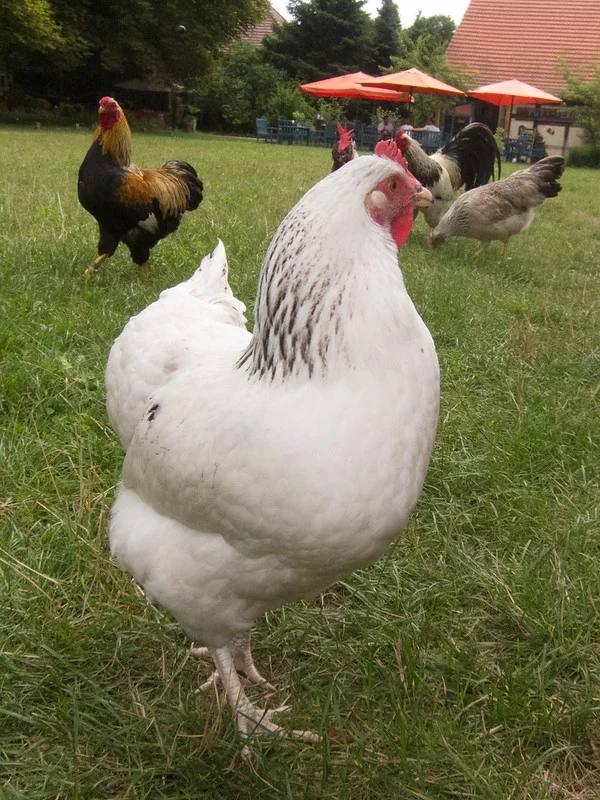
Want to learn more? This book on the Birds of Prey of North America is a fantastic read!
The western side of the U.S. is home to some of the most pristine stretch of natural woodlands in the country, and nowhere embodies this blend of coastal wind, dry deserts, and lush forests as much as the Golden State.
California’s tall redwoods and hidden mountains make for ideal habitats, where relatively rare birds like eagles can live in peace, especially now that conservation efforts have made it more than just taboo to endanger them, but illegal.
Below, we discuss the two eagles that can be spotted in California.
Want to attract birds of prey to your yard? Take a look at our article!
What Eagles can be seen in California?
Table of Contents
1. Golden Eagle

Wingspan
2m
Weight
3-6kg
Life Expectancy
Up to 38 years
Diet
Small - medium mammals
Also known as the Royal Eagle or the King of Birds,these eagles breed farther north, but they are a year-round visitor in California’s mountainous northern reaches.
Their numbers typically start to dwindle in the warm months and grow in the winter when it gets too cold north of Oregon.
While infrequent, like bald eagles they are hard to miss once in proximity, as these are the two largest raptors that frequent North America.
Its seven-foot wingspan is white on the underside like its tail. The “golden” feathers of its namesake are found on its crown and cape.
These feathers are really more light brown, but made to appear gold in contrast to the brown feathers covering the rest of its body.
The golden eagle is revered among raptors because it is the consummate hunter, capable of taking down prey both large and small, in land or in water.
They can effectively defend their keep against other predators with dive bombing attacks from unseen vantages.
Their nests sit in mountain cliffs where outcroppings and boulders protect their stashes, and less often, at the top of tall trees.
These hideouts usually overlook lowland hunting grounds that prey has to cross without cover, or watery feeding areas where they can be caught napping after a feast.
You might even spot a golden eagle nesting in an abandoned or little-used structure like a ranger’s watchtower.
2. Bald Eagle

Wingspan
204cm
Weight
3-6kg
Life Expectancy
Up to 20 years
Diet
Mostly fish, some small birds and reptiles
America’s national bird is a welcome sight in California, after so many of them disappeared in the late twentieth century.
Efforts to save their habitats (and avoid poisoning them) have led to a substantial increase in their numbers post-2000, particularly in the northwest part of the state where golden eagles also like to vacation.
Look for the unmistakable white cap–from which these eagles derive the name ‘bald’ rather than a lack of crown feather–on a mostly-brown body with a prominent yellow beak and legs.
The youths of either bird are more easily confused with one another, as they are a mixture of brown and white feathers that aren’t as distinct as their adult forms.
Bald eagles like the mountains as much as their golden cousins, but they are more likely to use tall trees, and their gargantuan nests are as large as they come in the animal kingdom.
You might see an eagle nest as a strange cluster at the top of a tree that appears too large to be natural, when it’s really a gathering of earth and sticks that this raptor will defend with its life.
Bald eagles love fish more than golden eagles, so they are far more likely to be found near lakes, rivers, and streams.
They also come down from their perches to scavenge other predators’ leftovers, whereas a golden eagle will only eat what it kills.
Conclusion
Fortunately, both golden and bald eagles are protected in the state of California, so their once-endangered numbers have stabilized so that they’re out of the danger zone for now.
It helps that eagles are allowed to flourish in places like Alaska and Canada, as many of these birds will make their way south during the coldest parts of the year, and end up settling in north California before they reach the desert’s father south toward Mexico.

More Articles.

What does it mean to see a White Hen in your dream? (Symbolism & Meaning)
Seeing a Phenoix in your dream can symbolize a fresh start, a new beginning, or

Best Camera For Bird Watching 2020
Article Summary: Best Budget Camera: Nikon D500 DX-Format Digital SLR Best Mid-tier Camera: Canon EOS

North American Birds with Yellow Bellies (34 Species with Pictures and Sounds)
Canada and America are filled with many wonderful birds with yellow bellies – in fact,

About Us
We are avid bird-watchers who recently retired, allowing us more time to travel the world. Fortunately, we have managed to visit numerous countries around Europe, Asia, and America. Watching and photographing birds has been a passion for many years and we are making the most of the extra time on our hands!
